“We forget that the water cycle and the life cycle are one” – Jacques Cousteau
In recent times, it becomes prudent to investigate relationships between the geomorphological realm and design methodologies that can cohabit and deal with problems of damaged ecosystems, urban developments and technological advancement but most importantly creating hybrid solutions yet unknown. The project focuses on the deprived landscapes and ecosystems of the lake Dojran, the smallest natural lake in the Republic of Macedonia. In recent history the water levels of the lake decreased primarily due to local agricultural irrigation which created uninhabitable waters for certain species. These processes lead to an abundance of decaying fauna which increased the foundation of the lake and made possible for specific type of bacteria, largely cyanobacteria, to flourish and bloom.
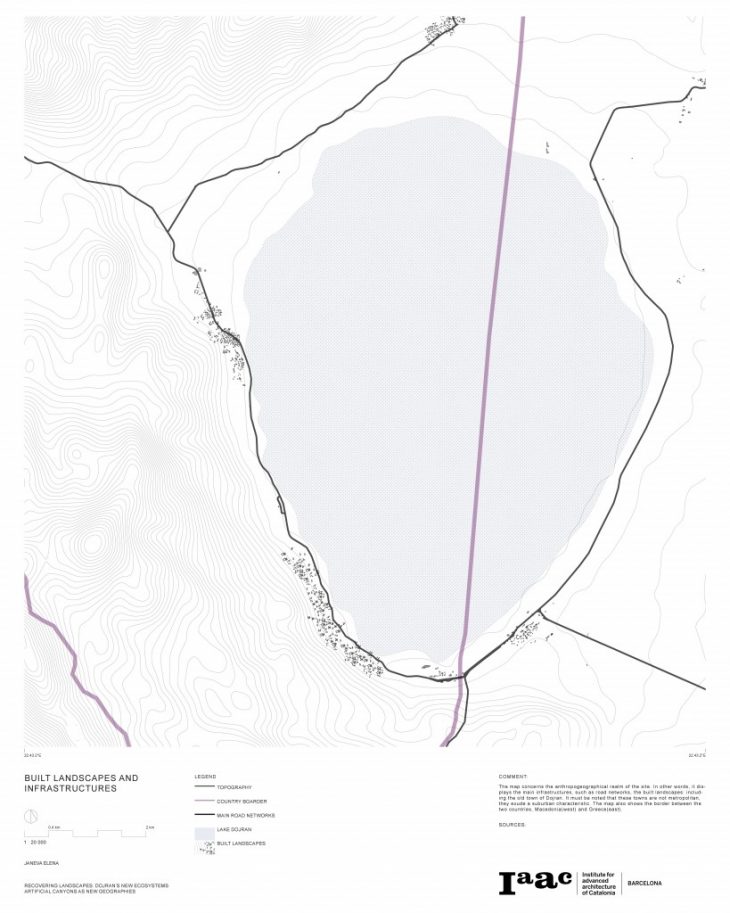
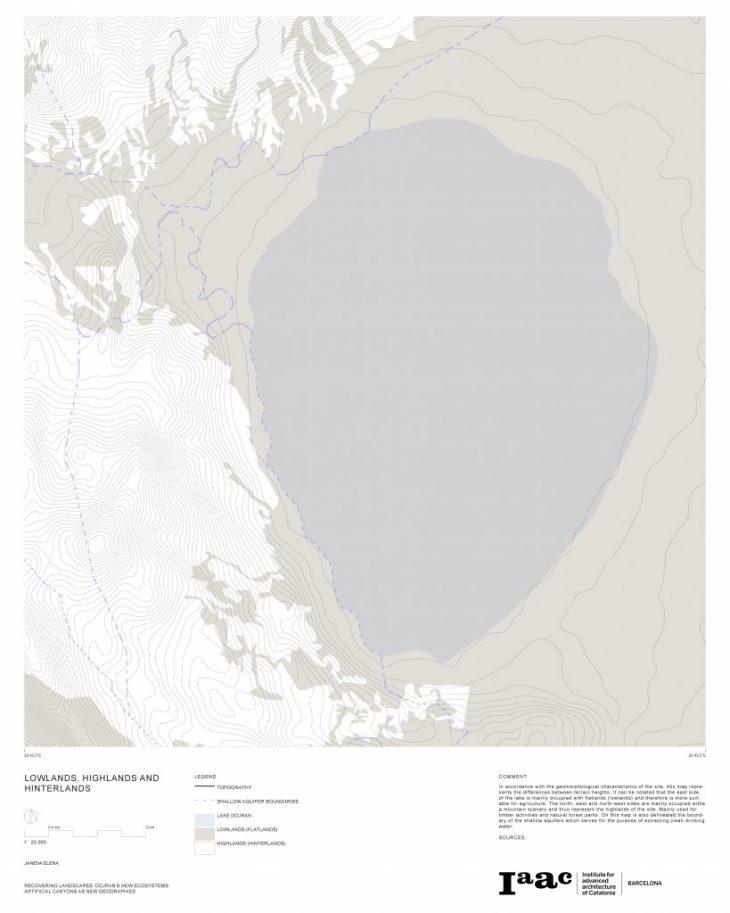
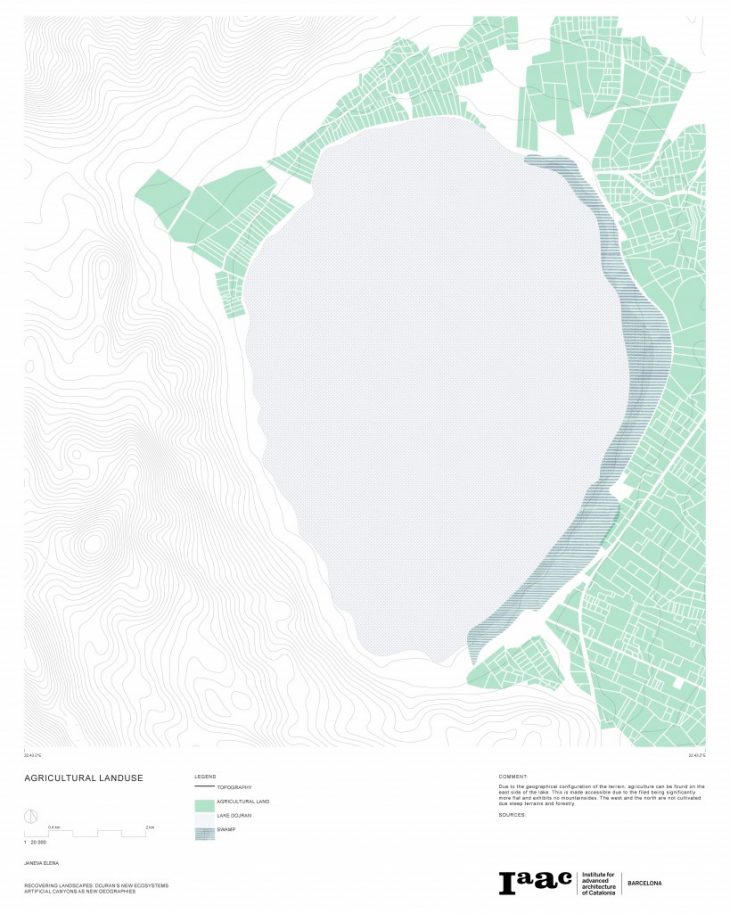
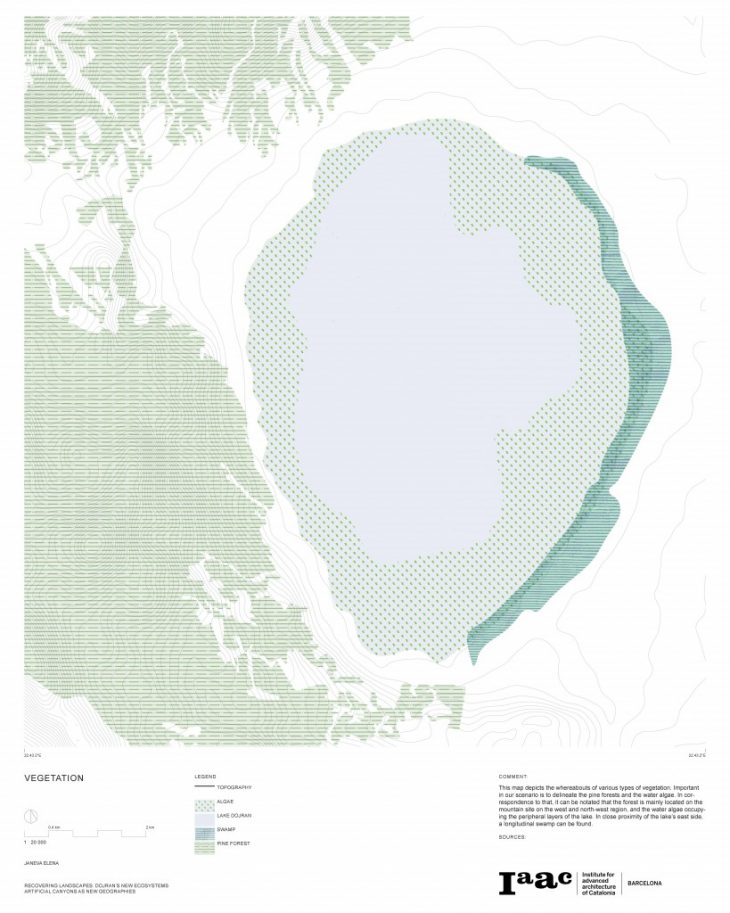
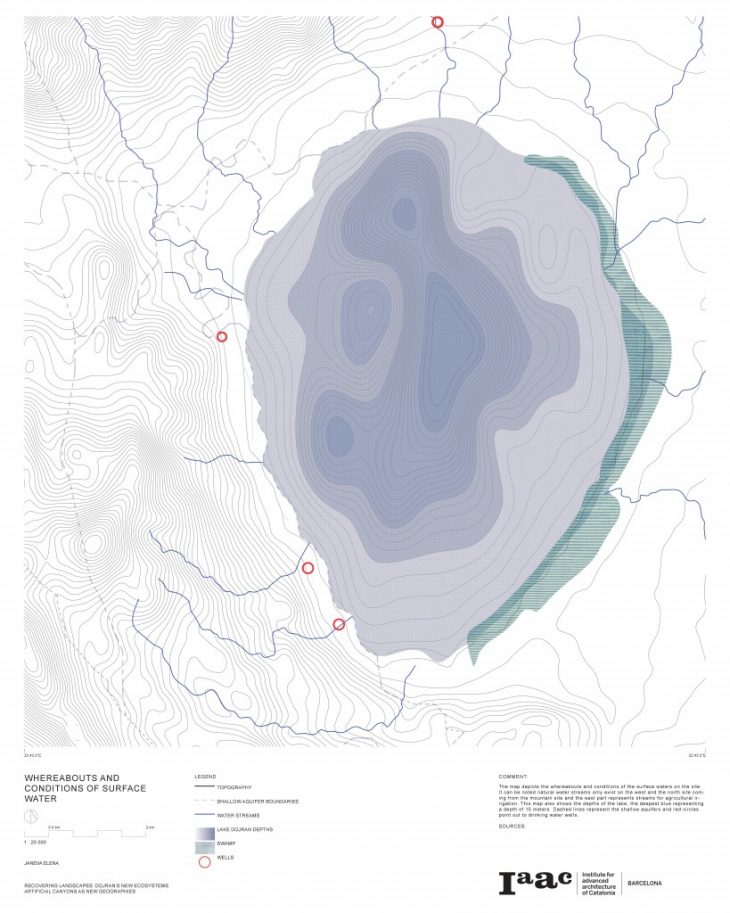
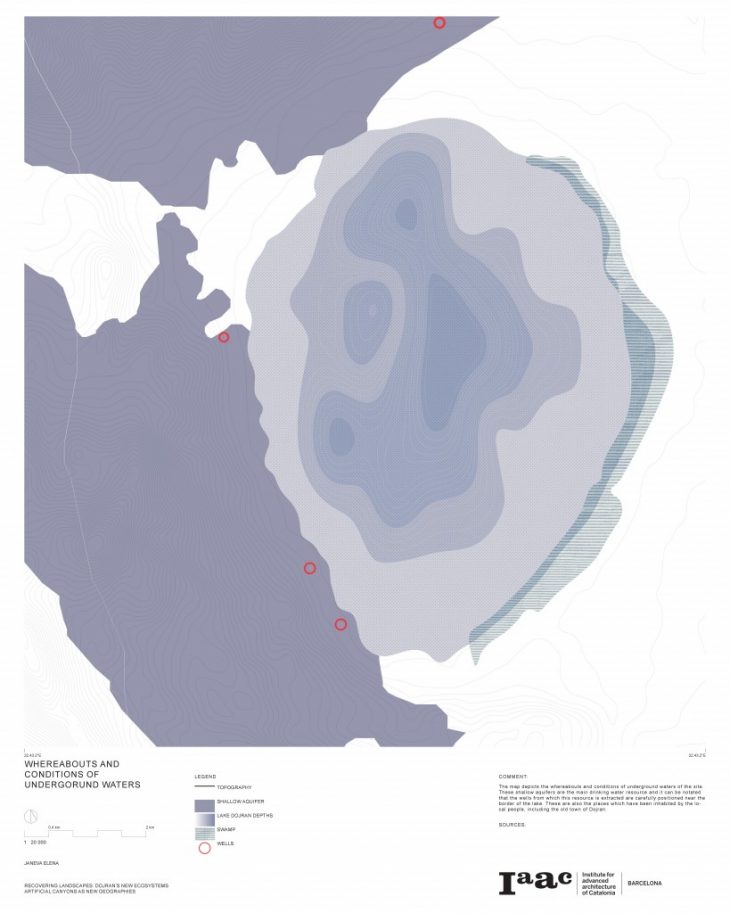
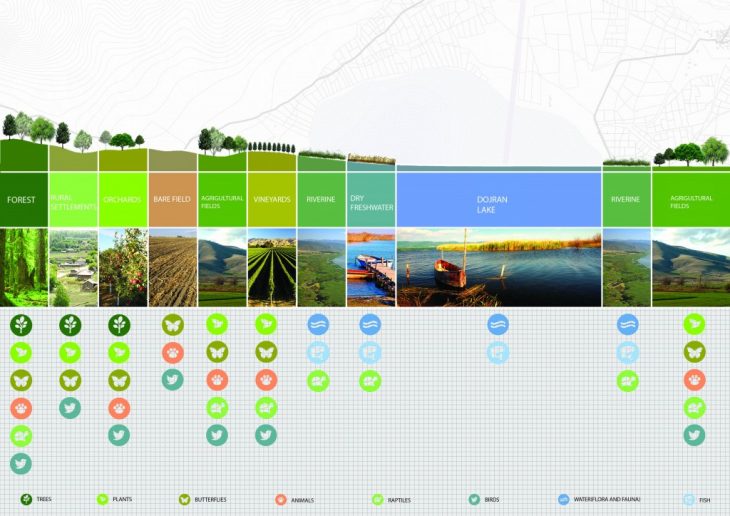
The present situation calls for new devices and methodologies, creating systems capable of dealing both with infrastructural scales and local conditions of the area. These systems explore scenarios where the wind is taken as the dominant force of interaction between creating new artificial geographies, stimulating the regeneration of the lake’s ecosystem and encouraging new urban processes to take place. The experiments will investigate possible increase of wind acceleration via careful positioning of canyon-like structures that would provide the desired conditions for the wind to gain speed, resulting in a constant aeration of the water, and the possible environmental recovery of the flora and fauna of the lake.
[CONCEPT OF THE SYSTEM]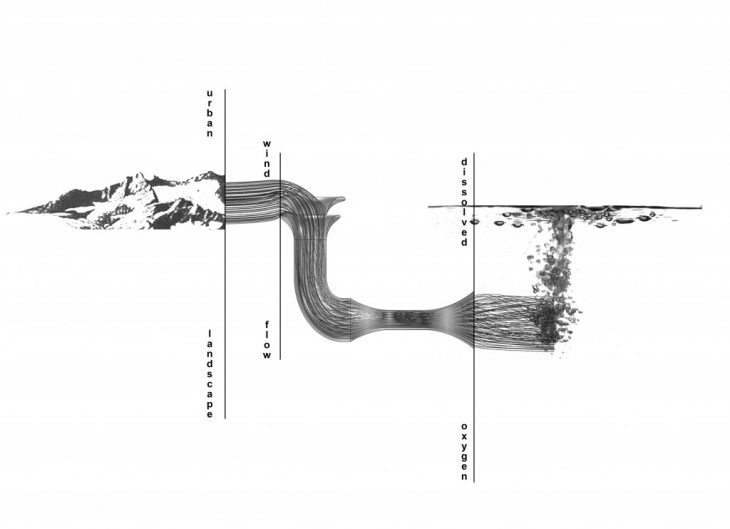
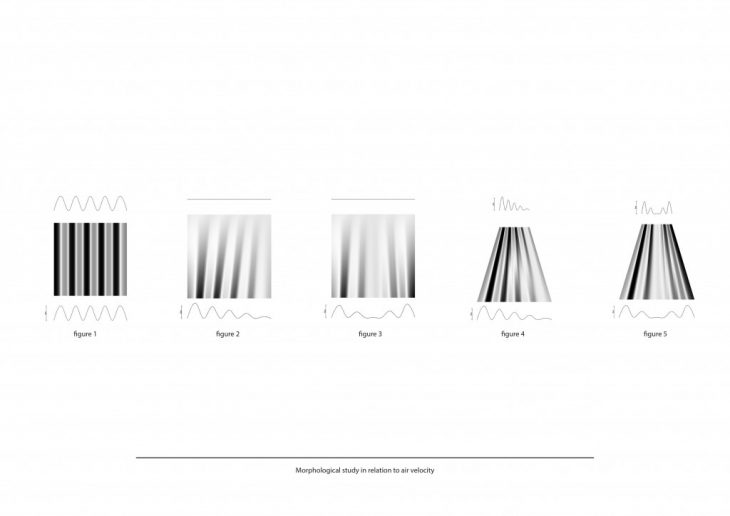
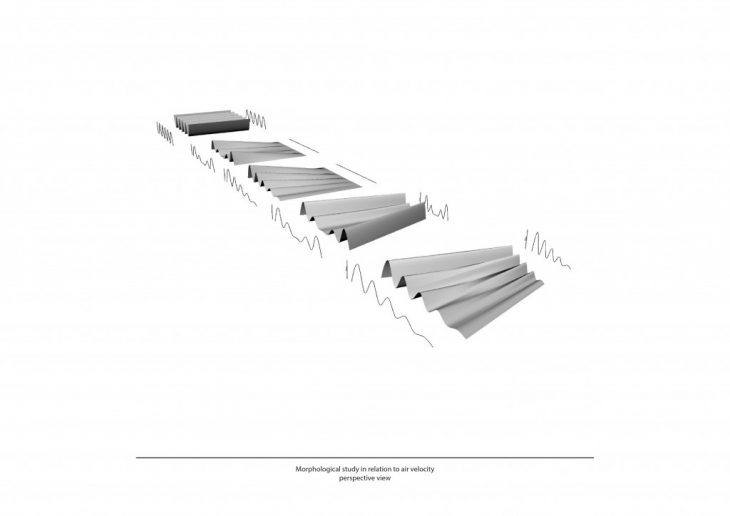
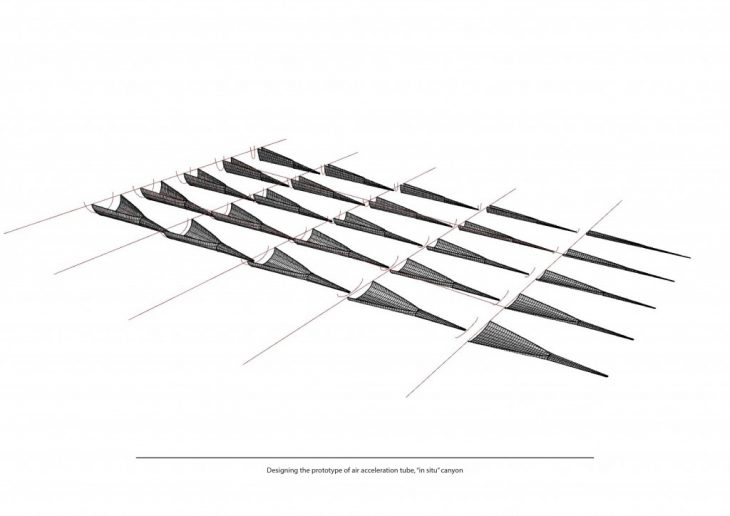
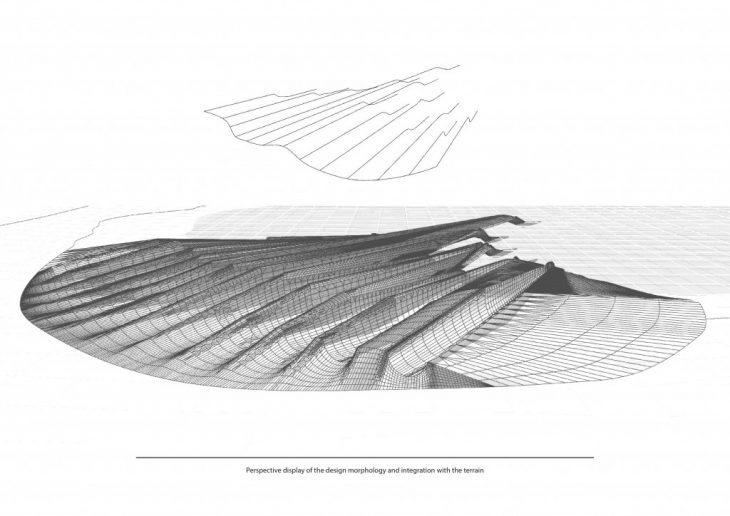
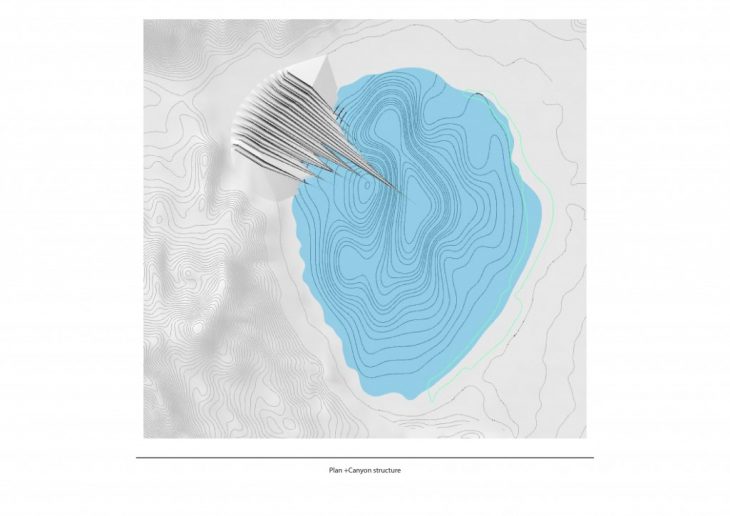
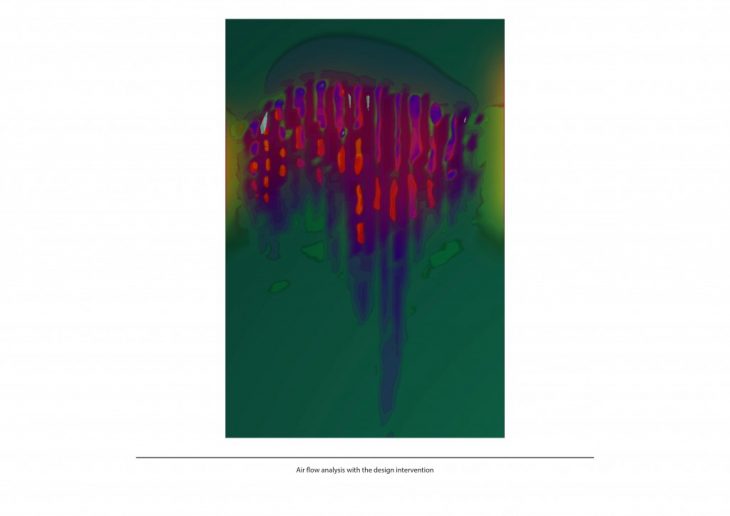
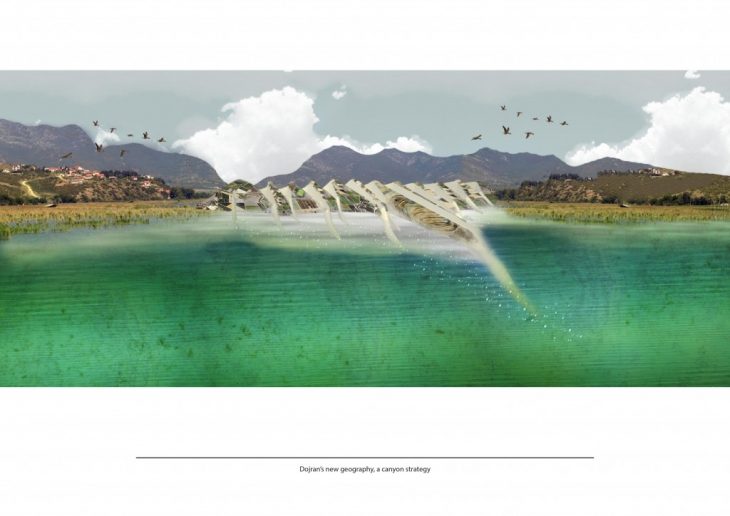
[CONCLUSIONS]
The thesis explores scenarios where the wind is taken as the dominant force of interaction between creating new artificial geographies, stimulating the regeneration of the lake’s ecosystem and encouraging new urban processes to take place. The drivers of the project take the form inspired by natural canyons as plug-ins devices to the existing geographical conditions. These new morphological additions to the surrounding landscape modify the natural environment for the purpose of using the wind as a supreme tool to steer processes of the lake’s rehabilitation. The main idea behind this structures is to recognize them less as representational imperatives and more as devices which work with performances: energies, forces and resistances. By switching conventional design processes to such mindsets, there open up numerous opportunities and possibilities that provoke the rethinking of new typologies, local economies, advanced agricultures and infrastructures, attentive to the definition of spaces in transitions and recovering landscapes.
reCANYONING DOJAN’S ECOSYSTEM is a project of IaaC, Institute for Advanced Architecture of Catalonia developed at Master of Advanced Architecture in 2016/17 by:
Student: Elena Janeva
Faculty: Jordi Pagès i Ramon and Lluís Viu Rebés